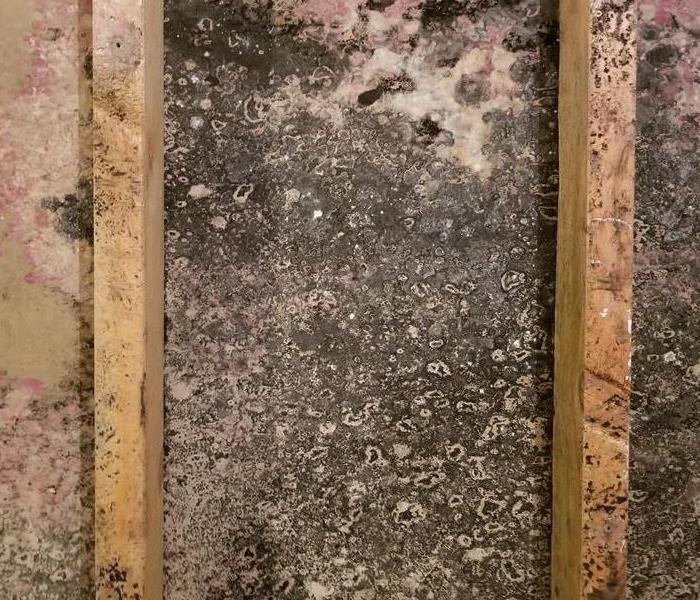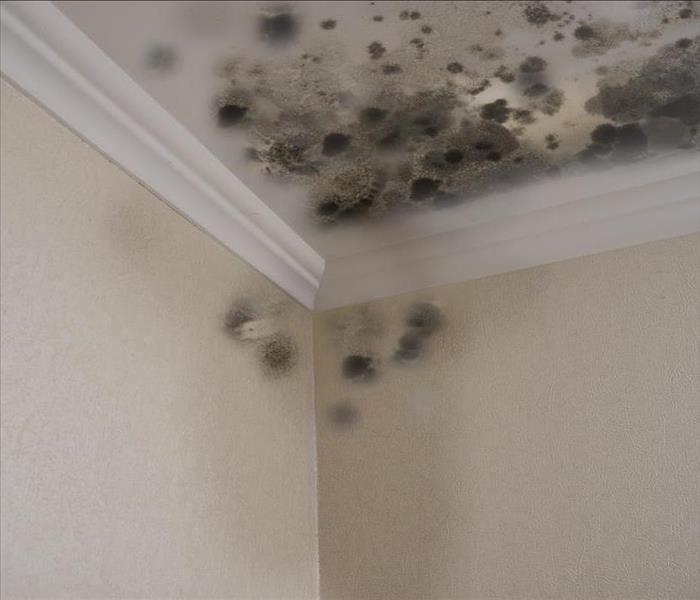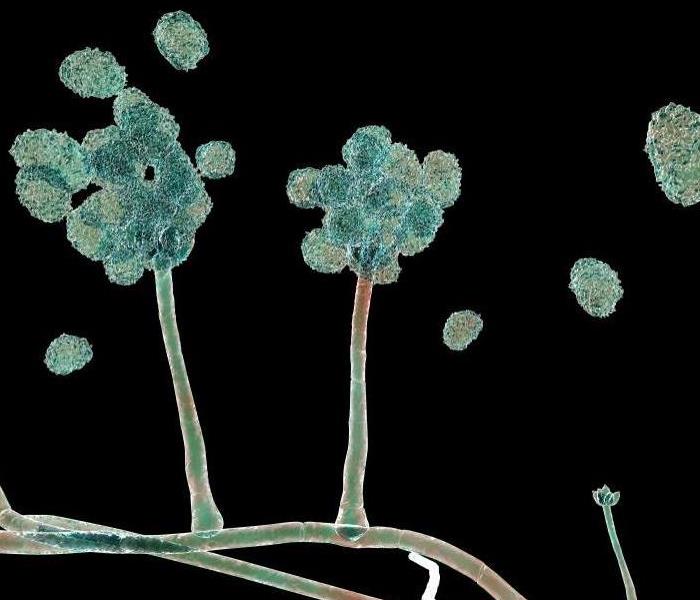Recent Mold Remediation Posts
Mold and Home Energy Efficiency: Finding the Balance
10/29/2023 (Permalink)
 Understanding the connection between energy efficiency and moisture control is essential being a home or business owner.
Understanding the connection between energy efficiency and moisture control is essential being a home or business owner.
Achieving energy efficiency in our homes is a priority for many homeowners, but it's crucial to strike a balance between energy-saving measures and preventing mold growth. Mold can thrive in environments with excessive moisture and poor ventilation, which may occur when we seal our homes tightly. In this blog, we will explore how to maintain a balance between energy efficiency and mold prevention for a healthy and comfortable living environment.
Understanding the Connection
To find the balance between energy efficiency and mold prevention, it's important to understand their connection. Energy-efficient homes with proper insulation and tightly sealed windows and doors can reduce heat loss and lower energy consumption. However, these measures can also trap moisture indoors, leading to mold growth. Proper ventilation is critical to prevent excessive moisture buildup, as it helps remove humidity and allows fresh air to circulate. Awareness of this connection enables homeowners to implement strategies that promote energy efficiency while avoiding the conditions that favor mold growth.
Moisture Control Strategies
Implementing effective moisture control strategies is vital for balancing energy efficiency and mold prevention. Regularly inspecting and fixing any sources of water leaks, such as plumbing fixtures or roofs, can reduce moisture intrusion. Installing and maintaining proper drainage systems and guttering can also prevent water from accumulating near the foundation of the house. Additionally, using a dehumidifier in areas prone to high humidity, like basements or bathrooms, can help control moisture levels. By actively managing moisture, homeowners can minimize the risk of mold growth without compromising energy efficiency.
Ventilation Solutions
Proper ventilation is key to maintaining a balance between energy efficiency and mold prevention. While tightly sealed homes can be energy-efficient, they require mechanical ventilation systems to ensure air circulation. Installing exhaust fans in kitchens and bathrooms helps remove moisture-laden air from these areas. Consider utilizing energy recovery ventilators (ERVs) or heat recovery ventilators (HRVs) to bring in fresh, filtered air while expelling stale air. Regularly maintaining these ventilation systems, including cleaning or replacing filters, ensures their optimal performance and helps prevent mold growth.
Insulation Options
While insulation is essential for energy efficiency, certain types of insulation may also trap moisture and promote mold growth. Fiberglass insulation is a popular choice, but it can absorb moisture and subsequently promote mold growth. Alternative insulation options like spray foam or cellulose insulation can provide comparable energy savings with less risk of mold growth. Proper installation of insulation is also vital for maintaining a balance between energy efficiency and mold prevention. Proactively managing moisture and ensuring proper ventilation while using insulation helps homeowners avoid mold infestations and maintain optimal energy efficiency levels. It's important to choose the right insulation option for your home and maintain it regularly.
Striking the balance between energy efficiency and mold prevention is essential for homeowners looking to make their homes comfortable, efficient, and mold-free.
By understanding the connection between energy efficiency and moisture control, implementing proper moisture control strategies, and investing in effective ventilation solutions, homeowners can enjoy a home that is both energy-efficient and resilient against mold growth.
Leaking Roof? Here's How Long It Takes for Mold to Develop
5/16/2023 (Permalink)
 Mold growth can be a significant issue for homeowners with a leaking roof.
Mold growth can be a significant issue for homeowners with a leaking roof.
As a disaster restoration company, we understand that water damage can be a nightmare for homeowners. One of the most common issues that arise with water damage is mold growth. Mold can be hazardous to your home's structure and cause unpleasant odors, so it's important to understand how long it takes for mold to develop and what to do if it does develop.
How long does it take for mold to develop in a leaking roof?
The answer to this question varies based on several factors. The first and most crucial factor is the amount of water exposure. If your roof has been leaking for a long time, mold can develop within 24 to 48 hours. However, if the water exposure is limited, it can take several days or even weeks for mold to develop.
The second factor is the temperature and humidity levels of your attic. Mold grows best in warm and humid environments. If your attic has poor ventilation, the temperature and humidity levels can quickly rise, providing an ideal environment for mold growth.
Lastly, the type of materials in your attic can also contribute to the rate of mold growth. Organic materials such as wood, paper, and insulation are particularly susceptible to mold growth. So, if your attic has a lot of organic materials, it can speed up the mold growth process.
What to do if mold develops in your attic?
If you discover mold in your attic, it's essential to take immediate action to prevent further growth and potential structural damage. Here are the steps you should take:
Identify the source of the moisture: The first step in addressing mold growth is to identify the source of the moisture. In this case, it's likely a leaking roof or poor ventilation. Addressing the root cause of the moisture is critical to prevent further mold growth.
Consult a professional: Mold growth can be hazardous to your health and cause structural damage to your home. It's best to consult a professional disaster restoration company like SERVPRO of Scarsdale/Mount Vernon to assess the extent of the damage and recommend the appropriate action.
Remove the mold: The next step is to remove the mold. This process can be challenging and dangerous, which is why it's best to leave it to the professionals. They will use specialized equipment and techniques to remove the mold safely and effectively.
Repair the source of the moisture: After the mold has been removed, it's essential to repair the source of the moisture to prevent further mold growth. This may involve fixing a leaking roof or improving ventilation.
Prevent future mold growth: Finally, it's crucial to take steps to prevent future mold growth. This can include regular inspections of your attic and roof, addressing any water damage promptly, and improving ventilation.
In conclusion, mold growth can be a significant issue for homeowners with a leaking roof. The rate of mold growth can vary based on several factors, including the amount of water exposure, temperature, humidity levels, and the materials in your attic. If you discover mold growth in your attic, it's essential to take immediate action to prevent further growth and potential structural damage. Consulting a professional disaster restoration company is the best course of action to address mold growth safely and effectively.
The 4 Most Common Types of Mold
2/10/2023 (Permalink)
 Common Types of Mold are important
Common Types of Mold are important
Mold growth is a common problem for homeowners. Not only does it make your home smell bad, but it can also cause significant damage to your home.
Mold spores are everywhere. They're in the air, on surfaces, and on your skin. They're even in the food you eat. Mold spores can easily spread throughout a home. When mold spores land on a damp or wet surface, they begin to grow into colonies which are identified by their color and texture.
There are over 100,000 different species of mold, which means there are many types to watch out for. You'll most often see one of these four types in your home:
Stachybotrys atra
Stachybotrys atra, also known as black mold, is a type of fungus that thrives on plant-based materials. It has a slimy texture and can be black or dark green in color. This type of mold is known for being difficult to discover because it's usually hidden within walls or ceilings--and once you spot it, you'll want to get rid of it right away!
Stachybotrys atra often grows in homes or businesses that have suffered from some type of water loss such as a leak or a flood. If you see this type of mold in your home, call a professional immediately so they can remove it before it spreads throughout the structure.
Cladosporium
Cladosporium is a common type of mold. It appears as black scattered dots at first, then appears green once the patches become larger. It's often found in bathrooms but can also grow on wallboard and insulation.
Aspergillus
Aspergillus is a common type of mold that often grows outside. It is often times found growing on food, on leaves, or in soil. Aspergillus can be black with white and yellow spots
Alternaria
Alternaria is a common type of mold that can be found in homes. It's usually brown, grey, or olive-colored and looks like thick strands of hair. It usually thrives outside. but is often found in your attic, basement, or crawl space.
If you see any of these types of mold in your home, call a professional to remove it.
If you see any of the four most common types of mold in your home, it's time to call a professional. Mold can cause significant property damage and even more expensive repairs if left untreated. If you have any doubts about whether or not you have a mold problem, don't hesitate to contact our SERVPRO of Scarsdale/Mount Vernon team today!
If you're worried about mold in your home, it's important to take action immediately. Mold can cause significant property damage if it grows unchecked for too long. If you see any of these types of mold growing on surfaces in your home or office building, call professionals who know how to get rid of them safely.
 Understanding the connection between energy efficiency and moisture control is essential being a home or business owner.
Understanding the connection between energy efficiency and moisture control is essential being a home or business owner.

 24/7 Emergency Service
24/7 Emergency Service

